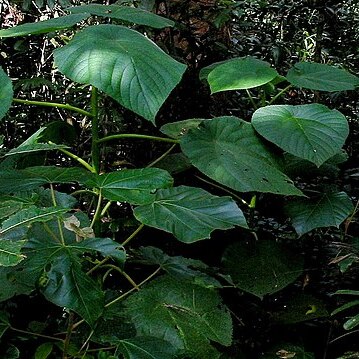A shrub up to 4 m high. The leaves are simple and 11-28 cm long. Both sides of the leaves have stinging hairs. Plants are separately male and female. The fruit are 1.6 cm long by 1.8 cm wide. They occur in bunches in the axils of leaves. The colour can be white or pink. There are several seeds inside. The seeds are 1-2 mm across. The fruit is edible once the stinging hairs have been removed.

